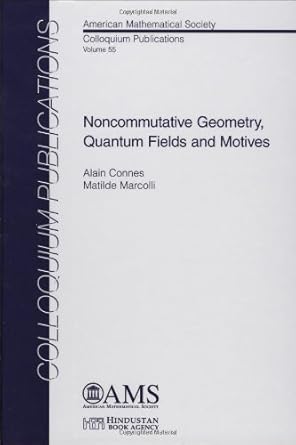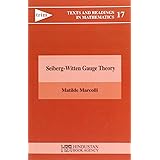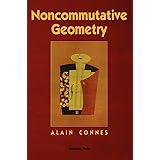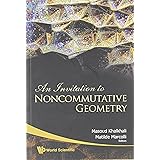Mathematics and physics has had an intense symbiotic relationship in the last few hundred years, but even more so in the last three decades, due in part to the willingness of physicists to learn highly sophisticated "pure" mathematics, but also the willingness of mathematicians to learn some physics. This symbiosis has resulted in brilliant developments in fields of physics and mathematics such as quantum field theory, superstring theory, and differential and algebraic geometry. This research is fascinating but it has put those entering these areas into somewhat of a quandary, in that they must master both the physics and the mathematics in order to be able to get to the frontiers of research. This is complicated by the relative lack of good books on the subjects that go beyond the mere formalism and strive instead to give insight and needed intuition.
In this regard this book does not attempt to be instructional and it presupposes that the reader has already mastered perturbative quantum field theory as well as the theory of mixed motives from algebraic geometry. To obtain mastery of both of these areas is a formidable undertaking, and the authors' brief overviews of them in the book will not suffice to give an in-depth understanding. In addition, the book does not make an attempt to reach into the area of nonperturbative quantum field theory with all its difficulties and unknowns. Indeed, research into this area has been extremely slow and this shows no sign of improvement.
The authors want to view a renormalizable perturbative quantum field theory T in terms of an affine group scheme that is associated with the subcategory of flat equisingular vector bundles arising from T. This group scheme as it turns out can be viewed in terms of Galois theory, which is a very curious development and which the authors spend the first eight sections of the book discussing in some detail. The quantum field theory T will be finite if its Galois group is trivial and super-renormalizable if its Galois group is finite-dimensional. Even though expressing quantum field theory in this manner will not facilitate computations such as the calculation of cross-sections, it does offer hope that the renormalization procedure does have some mathematical rigor to it. Many mathematicians have been skeptical of quantum field theory because of this lack of rigor.
Their discussion begins with the `Connes-Kreimer' theory of renormalization which expresses the Bogoliubov-Parsiuk-Hepp-Zimmermann (BPHZ) procedure in terms of a Birkhoff factorization of loops in a particular Lie group associated to a commutative Hopf algebra. To the physicist reader who has worked in the theory of integrable systems in statistical mechanics, Hopf algebras are very familiar, in that they arise in the factorization conditions for the partition function. In the mathematical literature they are now usually discussed under the topic of `quantum groups', but historically they arose in studying the singular cohomology of locally finite topological spaces with a base point. If one applies the singular homology functor to the diagonal mapping of a pointed space, then this induces a homomorphism on the homology called a `comultiplication.' If the homology functor is applied to the basepoint mapping this induces a homomorphism on the homology called the `unit.' Abstracting from these considerations to the case where the homology is a graded vector space over a field gives a `comultiplication' as mapping from the homology to the tensor product of the homology. One can then define a notion of coassociativity for this comultiplication, a `counit', the latter being a mapping of the homology to the field over which the homology is defined that factors through the tensor product in a natural way. These mappings define a `coalgebra' structure for the singular homology of a locally finite space. If now one does essentially the same thing with the cohomology functor, then one obtains the cup product and a unit which are the "dual" notions to the coalgebra case. But if then one wants to be concerned with the homotopies of these maps, and how to multiply them and so on, one obtains the notion of an `H-space'. The homology of an H-space has a product called the Pontryagin product, and if one dualizes this algebra one obtains a comultiplication. A Hopf algebra has both of these products satisfying the conditions as delineated by the authors.
The authors are not concerned with how Hopf algebras are used in topology but instead are interested in their relation to `affine group schemes.' These objects may sound exotic at first but they just a formalized methodology for constructing groups from other algebraic objects. For example, if R is any commutative ring with identity then the 2 x 2 matrices with entries in R having determinant 1 form a group under matrix multiplication, called SL2(R) in the literature and which is an affine group scheme. Many other such elementary examples of affine group schemes are available, and the procedure by which the groups are constructed can be abstracted into the notion of a `representable functor'. For an algebra R defined over a field k (a k-algebra) one wants a method by which a group G(R) can be obtained from R. The functor obtains G(R) by finding the solutions in R of some family of polynomial equations defined over k. The trick is to find the most general solution of these equations, and to do this one considers a polynomial ring over k with indeterminates the variables in the equations. One then factors out the ideal generated by the relations expressed by the equations to obtain a quotient algebra A. If G(R) is the solutions of the equations in R, then a homomorphism from A to R will take the general solution to a solution in R that corresponds to an element of G(R). For such an A, this gives rise to a correspondence between G(R) and Hom(A, R; k), and in general one can show that if G is a functor from k-algebras to sets, and if G(R) is the set of solutions in R of a family of equations, then there is a k-algebra A and a correspondence between G(R) and Hom(A, R; k). A is then said to represent F and an affine group scheme over k is a representable functor from k-algebras to groups.
The authors are focused on affine group schemes where A is a commutative Hopf algebra and R is a unital k-algebra, and the Lie algebras of affine group schemes. Their strategy is to assign a Hopf algebra over the complex numbers to a given renormalizable quantum field theory in such a way that the coproduct of this Hopf algebra respects the operations in the BPHZ formalism. Thus they construct a "Hopf algebra of Feynman graphs", by first concentrating on the graphs responsible for divergences and then later on the full collection of Feynman graphs by the inclusion of arbitrary one-particle irreducible graphs. Interestingly, the Hopf algebra they construct has a grading by both the loop and line number of the Feynman graphs, with the Hopf algebra being connected in the second case by not in the first. For the second case, this allows them to show, although they do not do so explicitly, that the affine group scheme associated to this Hopf algebra is a projective limit of linear algebraic groups. For the general case where external lines are included, the full Hopf algebra is a symmetric algebra on the linear space of distributions, with the latter being necessary to model the incoming momenta.
The crucial result that allows the authors to get a handle on the BPHZ formalism is the Birkhoff factorization of loops. Those familiar with the inverse scattering method, the theory of complex vector bundles, or the factorization conditions in the theory of integrable systems should have no problem understanding Birkhoff factorization. The authors assume prior familiarity with it since they do not motivate it intuitively or historically in the book. The authors use the language of affine group schemes in order to obtain a recursive formula for the factorization. For the case of the Hopf algebra of Feynman graphs, they show that the recursive formulae are identical to the BPHZ renormalization. This is a very interesting result, and should placate critics who have been skeptical of the non-rigorous nature of the renormalization procedure in quantum field theory. Even more interesting is that the authors show what role the renormalization group and the beta function play in this new formalism. The renormalization group appears as a 1-parameter subgroup of the affine group scheme associated with a positively graded connected commutative Hopf algebra and the beta function is the infinitesimal generator of the renormalization group.
It is after the discussion of renormalization that the level of mathematics may become very challenging to some readers, especially those from the physicist community. For it is here that the authors bring in some heavy machinery from algebraic geometry. Indeed, even specialists in this field may find the reading difficult, as the authors only summarize the main results from what is now called the theory of `motives.' Loosely speaking, motives allow one to do algebraic topology over algebraic varieties and schemes. Before getting into the theory of motives and the advantages they bring to their program, the authors prove that the counterterms in perturbative renormalization depend only on the beta function. In the interim they give a rigorous formulation of the `time-ordered exponential' in quantum field theory, which is a bread-and-butter calculation tool in quantum field theory and its mathematical formulation done rather sloppily in most textbooks and treatises on quantum field theory. There have been attempts in the literature to express the time-ordered exponential in the context of C*-algebras, but here the authors formulate it in the language of affine group schemes. This approach allows them to give a geometric interpretation of the divergences in renormalizable quantum field theory in terms of `flat equisingular connections.' This unexpected and very interesting strategy involves the use of a principal fiber bundle where the choice of base point is essentially fixing the value of Planck's constant, and the fibers are possible values of the mass parameter scaled by Planck's constant. When a particular class of connections, the equisingular flat connections are introduced in this bundle, this allows the authors to interpret the negative part of the Birkhoff factorization for loops in terms of equivalence classes of these connections. Interestingly, the compactification of this bundle corresponds to the classical limit where Planck's constant is zero.
The reformulation of quantum field theory in terms of equisingular flat connections allows the authors to use the Riemann-Hilbert correspondence to view them using the language of representation theory, a familiar strategy in physics. This therefore entails a kind of linearization, but it is done in this book in the context of affine group schemes. The authors motivate this more in a more general context of what is called a `neutral Tannakian category.' Loosely speaking, this is a category that can be shown to be equivalent to the category of finite-dimensional linear representations of an affine group scheme. To construct such a category they first consider `tensor categories', which have the familiar properties the linear transformations over ordinary vector spaces have and satisfy a coherence condition with respect to the tensor product. A particular type of tensor category, called `rigid', has a duality operation that allows one to have a well-defined notion of dimension, i.e. that the dimension be non-negative. The astute reader will note that this requirement is not as trivial as it appears at first glance, since if the dimension of an object in a category is defined as the Euler characteristic, it can be negative (take for example a curve of genus g). A Tannakian category is obtained if one can construct a `fiber functor' from this tensor category into the category of vector spaces defined over an extension of the field over which the tensor category is defined. The Tannakian category is `neutral' if this extension field is equal to the original field. The neutral Tannakian category of interest is the category of finite-dimensional linear representations of affine group schemes.
At this point the authors want to make the Tannakian formalism more concrete by applying it to the category of `differential systems.' This entails they delve a little deeper into the Riemann-Hilbert correspondence and how to use it to obtain a Galois theory of differential equations. As expected if compared to the familiar Galois theory of algebraic equations, this theory looks at the symmetries of the possible solutions of a (linear, meromorphic) differential equation to obtain its `differential Galois group'. Such a differential equation of course may have singularities, but if these singularities are `regular' they can studied by the well-known Riemann-Hilbert correspondence. The latter examines the behavior of the differential equation in the neighborhood of a point, and the regularity allows one to obtain an analytical continuation of the solution along any path that does not encounter any singularities. Deforming the path continuously does not alter this continuation, and so one obtains the action of the homotopy group of loops on the finite-dimensional space of local solutions at this point. The representation of this action in the general linear group over this space is the familiar `monodromy' group of the differential equation, and this has been generalized recently for the case of irregular singular differential equations by the use of what is called the `wild fundamental group.' The authors do not go into these constructions in any kind of detail, but instead refer the reader to the references (most of which are written in French). The differential Galois group is the Zariski closure of the wild fundamental group, and the authors briefly show how to construct the Riemann-Hilbert correspondence for this more general case. This is done in the context of the category of differential modules, and the differential Galois group of a differential equation is obtained by using the affine group scheme associated to the Tannakian subcategory generated by the differential module associated to the equation.
Along these lines, the main interest of the authors though is in using the Riemann-Hilbert correspondence for the class of flat equisingular connections constructed in earlier sections. In order to carry this out, they must construct the category of flat equisingular vector bundles, which they do by utilizing filtered vector bundles. For those readers who have been introduced to mixed Hodge structures, filtered vector bundles should be very familiar, for mixed Hodge structures can be straightforwardly defined using them (and those readers who are familiar with mixed Hodge structures will find the discussion on motives later on much more palatable). The category of flat equisingular vector bundles that they construct is shown to be a neutral Tannakian functor, and also to be equivalent to the category of representations of a particular affine group scheme. The latter is constructed by making a connection with time-ordered products and `universal counterterms', thus solidifying the connection with perturbative quantum field theory. This connection is made even more concrete in that they show that this affine group scheme acts on the coupling constants of quantum field theories and can be used to define a `Galois group' for such theories. A renormalizable quantum field theory is shown to be finite if and only if its Galois group is trivial, and super-renormalizable if its Galois group is finite-dimensional.
It is at this point that the authors make a giant leap into an area that might strain the mathematical background of the physicist reader. Using what they have done so far, the authors want to express perturbative quantum field theory in terms of the theory of motives. The latter is a very esoteric branch of algebraic geometry with some parts of it being ill defined at the time of publication. The authors only give a short summary of this field, and speak of it as the goal of finding a "universal" cohomology theory for algebraic varieties over a semi-simple monoidal category. It can also be viewed as an attempt to generalize the K-theory of vector bundles to the context of algebraic cycles or `correspondences'. A correspondence is essentially a linear combination of irreducible algebraic subvarieties of a product of smooth projective varieties. The collection of correspondences forms an abelian group and since they are defined in a product it makes sense to speak of their intersection number with respect to a subvariety of complementary dimension. One then defines an equivalence relation called `numerical effective equivalence' on the cycles by saying two are equivalent if they have the same intersection number with this subvariety. Readers with a strong background in algebraic geometry will realize that if this equivalence relation is replaced with `rational equivalence' one obtains the Chow groups, which are widely studied and which are discussed briefly by the authors. If one instead fixes the Weil cohomology and defines an algebraic cycle to be trivial if its image under the cycle map is trivial, then one obtains a notion of `homological equivalence' of cycles.
As the authors review (very briefly) there are many different versions of cohomology for algebraic varieties, depending on the characteristic of the field over which they are defined. For smooth projective algebraic varieties over fields with separable closure, one can define the `etale cohomology'; for fields of characteristic zero, one has the `de Rham cohomology' which is very familiar to physicists, and when this field can be embedded in the complex numbers the `Betti cohomology'. When the field has positive characteristic, there is another cohomology, called the `crystalline cohomology' that is probably the one unknown to most readers and somewhat mysterious because of its connection to what are called the ring of `Witt vectors' of the field. Crystalline cohomology was invented to fulfill the Grothendieck dream of integrating number theory with algebraic geometry, and the role of Witt vectors comes in as sort of methodology for lifting the Frobenious endomorphism from a context of prime characteristic to one where the characteristic is zero.
As stated before, these different cohomology theories can be related to each other, but mathematicians naturally are lead to ask whether they can be viewed as different manifestations of an underlying "universal" cohomology theory that has all the properties that a suitable cohomology should have. This strategy is manifested in the concept of a `Weil cohomology', and showing that the various cohomology theories are actually Weil cohomologies has resulted in a huge amount of mathematical research, marked by brilliant developments. The authors mention some of these developments but leave the details to the references. The idea of a motive is to encapsulate the notion of a universal cohomology theory for algebraic varieties but whose coefficient space is not the graded vector space of Weil cohomology but rather a semi-simple monoidal category.
The authors give some of the details behind how to construct a motive beginning with category of algebraic cycles under the numerical equivalence relation. They show that this category can be made into a semi-simple Abelian category with a rigid tensor structure. The latter structure needs to have a notion of duality, and this is obtained by adding the famous `Tate motives' to this category. This could be made into a Tannakian category if one had a suitable fiber functor. A restriction on the positivity of the trace for Tannakian categories forces the authors to modify the tensor product structure on their category of algebraic cycles in order for it to be a Tannakian category. A neutral Tannakian category is obtained if one assumes the "standard conjectures" of Grothendick. The authors identify various subcategories of this category, such as the subcategory of Tate motives and the subcategory of Artin motives, and the motivic Galois group of the latter is a generalization of the ordinary Galois group.
Note: This review is based on a reading of sections 1 - 8.2 of the book.

無料のKindleアプリをダウンロードして、スマートフォン、タブレット、またはコンピューターで今すぐKindle本を読むことができます。Kindleデバイスは必要ありません。
ウェブ版Kindleなら、お使いのブラウザですぐにお読みいただけます。
携帯電話のカメラを使用する - 以下のコードをスキャンし、Kindleアプリをダウンロードしてください。

何か問題が発生しました。後で再度リクエストしてください。
OK
Noncommutative Geometry, Quantum Fields and Motives (COLLOQUIUM PUBLICATIONS (AMER MATHEMATICAL SOC)) ハードカバー – 2008/1/20
英語版
Alain Connes
(著),
Matilde Marcolli
(著)
The unifying theme of this book is the interplay among noncommutative geometry, physics, and number theory. The two main objects of investigation are spaces where both the noncommutative and the motivic aspects come to play a role: space-time, where the guiding principle is the problem of developing a quantum theory of gravity, and the space of primes, where one can regard the Riemann Hypothesis as a long-standing problem motivating the development of new geometric tools. The book stresses the relevance of noncommutative geometry in dealing with these two spaces.The first part of the book deals with quantum field theory and the geometric structure of renormalization as a Riemann-Hilbert correspondence. It also presents a model of elementary particle physics based on noncommutative geometry. The main result is a complete derivation of the full Standard Model Lagrangian from a very simple mathematical input. Other topics covered in the first part of the book are a noncommutative geometry model of dimensional regularization and its role in anomaly computations, and a brief introduction to motives and their conjectural relation to quantum field theory.The second part of the book gives an interpretation of the Weil explicit formula as a trace formula and a spectral realization of the zeros of the Riemann zeta function. This is based on the noncommutative geometry of the adele class space, which is also described as the space of commensurability classes of Q-lattices, and is dual to a noncommutative motive (endomotive) whose cyclic homology provides a general setting for spectral realizations of zeros of L-functions. The quantum statistical mechanics of the space of Q-lattices, in one and two dimensions, exhibits spontaneous symmetry breaking. In the low-temperature regime, the equilibrium states of the corresponding systems are related to points of classical moduli spaces and the symmetries to the class field theory of the field of rational numbers and of imaginary quadratic fields, as well as to the automorphisms of the field of modular functions. The book ends with a set of analogies between the noncommutative geometries underlying the mathematical formulation of the Standard Model minimally coupled to gravity and the moduli spaces of Q-lattices used in the study of the zeta function.
- 本の長さ785ページ
- 言語英語
- 出版社Amer Mathematical Society
- 発売日2008/1/20
- 寸法4.45 x 18.42 x 0.64 cm
- ISBN-100821842102
- ISBN-13978-0821842102
この著者の人気タイトル
ページ 1 以下のうち 1 最初から観るページ 1 以下のうち 1
商品の説明
著者について
Alain Connes, College de France, Paris, France,
登録情報
- 出版社 : Amer Mathematical Society (2008/1/20)
- 発売日 : 2008/1/20
- 言語 : 英語
- ハードカバー : 785ページ
- ISBN-10 : 0821842102
- ISBN-13 : 978-0821842102
- 寸法 : 4.45 x 18.42 x 0.64 cm
- Amazon 売れ筋ランキング: - 860,465位洋書 (洋書の売れ筋ランキングを見る)
- - 580位Differential Geometry
- - 2,439位Algebra
- - 2,798位Professional & Technical Geometry & Topology
- カスタマーレビュー:
著者について
著者をフォローして、新作のアップデートや改善されたおすすめを入手してください。

著者の本をもっと発見したり、よく似た著者を見つけたり、著者のブログを読んだりしましょう

著者の本をもっと発見したり、よく似た著者を見つけたり、著者のブログを読んだりしましょう
カスタマーレビュー
星5つ中5つ
5つのうち5つ
2グローバルレーティング
評価はどのように計算されますか?
全体的な星の評価と星ごとの割合の内訳を計算するために、単純な平均は使用されません。その代わり、レビューの日時がどれだけ新しいかや、レビューアーがAmazonで商品を購入したかどうかなどが考慮されます。また、レビューを分析して信頼性が検証されます。
他の国からのトップレビュー
Dr. Lee D. Carlson
5つ星のうち5.0
A new mathematical view of perturbative quantum field theory
2008年2月22日にアメリカ合衆国でレビュー済みAmazonで購入









